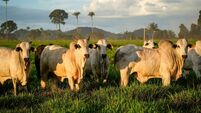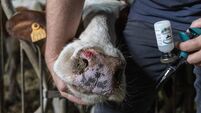Brian Reidy: Feeding and management of livestock once indoors

Cattle spend up to 150 days eating silage each year on Irish beef and dairy farms, and if it is poor quality, the animal performance will either be poor or expensive.
As we head towards the middle of November, the majority of animals that will be housed for the winter around the country are now in. Most have run out of grass, are finding recent conditions difficult or are saving a pick for next spring.
It has been an excellent autumn and early winter season, and with so much grass around, there have been huge benefits to managing it and utilising it well, and this has hopefully shortened the winter for many farmers.
For those who normally turn out stock in early to mid-March, it is only 18-19 weeks away. The extended grazing season has been a great boost for those who feared they would not have enough fodder for the winter.
Now that most are confident that they have sufficient fodder, the next step is to make the best possible use of the feed available on farm. That means balancing it correctly to achieve optimum animal performance.
If you are still a little worried about silage stocks, then you should stretch available stocks now and buy any stocks required, sooner rather than later.
I regularly write about silage quality as it is a huge cost on all livestock farms in Ireland. As an industry, we really need to focus more on how we produce our grass silage.
We need to strive for far better quality, and all stakeholders need to be involved in this conversation. Farmers, contractors, advisors and input providers can all contribute to the production of better silage.
Cattle spend up to 150 days eating silage each year on Irish beef and dairy farms, and if it is poor quality, the animal performance will either be poor or expensive.
2025 silages are a mixed bag, like any other year, with some top-class silages saved, while some have less than ideal quality ensiled. Many will now have their silage tested and have realised that it is not quite as good as they would have expected.
What is becoming apparent as I test silages around the country is the reality that good silages will not be made from old pastures. Recently reseeded, well-managed swards consistently produce the best quality silages. There is no getting away from this fact.
Grass silages this year, as I mentioned above, are a mixed bag and one major aspect which should not be ignored is that many of the high Dry Matter silages also have a high pH, which means they have not preserved well.
Good pit management will be critical when these two issues are encountered. Poorly managed pits will result in a huge level of waste and poor animal intakes. Moving across these pits quickly will help to reduce waste. A good sharp shear grab is a must in this scenario.
The maize silages I have tested so far are of outstanding quality and will really boost animal performance in the coming months.
One interesting observation is the side-by-side analysis of maize with and without plastic on the same farm.
Where accurate weights are available, it is showing maize under plastic is hitting 8t plus per acre, and without plastic is yielding between 6.5 and 7t of dry matter.
Most starches are between 35 and 39. Those yields blow the myth that maize silage is expensive out of the water. It is grass silage that is costly, particularly if we continue to make it Irish style.
Conditions have been ideal for pulling beet lately, up to this week. If you have pulled beet or have received a delivery, you must take care not to introduce beet too quickly to stock.
Fresh beet should not be fed until it is out of the ground for more than seven days. Gradually introduce and increase the feeding rate to avoid digestive upsets.
Beet is an excellent feed for cattle once it is fed correctly. It should be thoroughly chopped to improve intakes and reduce the risk of choking stock.
Remember that beet is low in protein, so ensure that you balance it correctly. Beet fed in high rates also needs to be carefully balanced for minerals.
Do your sums before buying beet. If you are not sure how to calculate its value, ask someone for accurate advice.
Work out your cost per tonne of dry matter, but more importantly, your cost per 1,000 UFL or 1,000 Mega Joules of energy utilised by your stock and what it will cost to standardise its protein content.
Get animals dosed as soon as it is appropriate to do so, and make sure that you use the products that are most effective for each batch of stock while getting the timing right.
There is little point in getting your feeding strategy right if your stock has a significant parasite burden. Parasites have been a major issue over the last few months and may have had resistance issues.
Dosing strategies need to be discussed with your vet to get the best results. Get dung samples checked by your vet and act accordingly.











